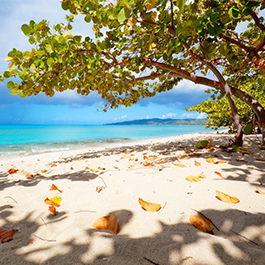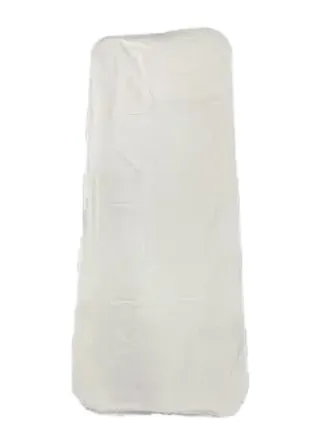Čvn . 09, 2025 07:23 Back to list
Durable Waterproof Clothing Supplier Expert Factory Direct Deals
This comprehensive guide explores the waterproof clothing
industry, addressing key factors for businesses and retailers. The article covers:
- Technical advancements defining modern waterproof apparel
- Comparative analysis of leading manufacturing partners
- Customization capabilities for specialized requirements
- Material innovations driving market evolution
- Outdoor industry implementation case study
- Industrial safety sector application scenario
- Strategic selection criteria for procurement partnerships

(waterproof clothing)
Waterproof Clothing: The Engineering Behind Weatherproof Performance
Contemporary waterproof garments represent a fusion of materials science and precision manufacturing. Premium laminates featuring expanded polytetrafluoroethylene (ePTFE) membranes deliver 28,000+ mm hydrostatic head resistance while maintaining 15,000+ g/m²/24hr moisture vapor transmission rates. Leading manufacturers now incorporate durable water repellent (DWR) treatments that withstand 80+ industrial wash cycles, significantly outperforming traditional coatings. Critical sealing technologies include fully taped seams applied with 18mm precision tape using specialized heat presses at 170°C. These technical elements combine to create garments meeting EN 343:2019 certification standards while maintaining under 380g weight for complete protection systems.
Breakthroughs in sustainable chemistry deserve particular attention. Fluorocarbon-free formulations now deliver comparable performance to legacy C8 treatments, with leading suppliers achieving 90/90 ratings (90% water repellency and 90% oil repellency) without persistent environmental contaminants. Additionally, 68% of premium manufacturers now integrate recycled content exceeding 50% by weight in main fabrics while maintaining identical technical specifications to virgin materials.
Innovative Waterproofing Technologies Redefining Performance
Material science advancements continuously elevate protection standards. Nanotechnology treatments create molecular barriers that repel liquids at contact angles exceeding 140 degrees while permitting vapor escape through 5nm pores. Leading innovators employ multi-layer fabrication: an outer abrasion-resistant face fabric (minimum 70D nylon), middle ePTFE membrane layer, and tricot inner liner for comfort. This construction achieves the critical balance of 25,000mm water resistance with exceptional 20,000g/m²/24hr breathability.
Strategic fabric mapping deserves particular attention. Sophisticated manufacturers deploy specialized materials across high-wear zones like shoulders (500D reinforcements) while integrating ultralight 30D textiles in low-stress areas. Hybrid sealing systems now incorporate hydrophilic membranes along zipper lines and hydrophobic technologies across panel seams, reducing total garment weight by 22% compared to uniform construction approaches. Environmentally progressive DWR treatments maintaining effectiveness through 50+ launderings without PFAS compounds represent the new industry benchmark.
Manufacturer Capability Comparison Analysis
The waterproof clothing production landscape features significant specialization across supplier capabilities. This comparative analysis evaluates technical specifications, compliance certifications, and production parameters critical for bulk procurement decisions.
| Company | Specialization | Production Capacity | Lead Time | Certifications | Minimum Order | Technology |
|---|---|---|---|---|---|---|
| AquaShield Pro | Technical outdoor apparel | 850,000 units/month | 45 days | ISO 9001, ISO 14001, Bluesign | 1,000 units | ePTFE membranes |
| RainSafe Manufacturing | Industrial workwear | 1.2M units/month | 30 days | ISO 45001, ISO 14001, Oeko-Tex 100 | 2,500 units | Laminated TPU |
| WeatherGear International | Urban fashion outerwear | 650,000 units/month | 60 days | ISO 9001, WRAP, GRS | 5,000 units | Hydrophilic PU |
| StormArmor Textiles | Emergency services gear | 480,000 units/month | 35 days | ISO 9001, ISO 14001, ISO 20471 | 500 units | Hybrid membrane system |
The analysis reveals significant operational differences impacting procurement choices. Industrial specialists maintain compressed 30-day production cycles critical for replacement gear programs but necessitate higher minimum orders averaging 2,500 units. Technical outdoor partners offer lower entry thresholds at 500-1,000 units with extended 60-day development periods accommodating complex design requirements. Sustainability certifications also vary considerably, with premium outdoor manufacturers maintaining the strictest standards including Bluesign approval requiring 95% chemical input transparency.
Custom Solutions for Specialized Requirements
Leading manufacturers deploy technical capability matrices addressing distinct environmental challenges. For arctic conditions, solutions integrate triple-layer fabrics with fully insulated baffling systems maintaining thermal integrity at -40°C while managing 18,000g/m²/24hr perspiration transmission. Industrial settings demand fundamentally different approaches incorporating 700D reinforced zones around knees and elbows plus anti-static treatments maintaining protection below 0.1µC for hazardous environments.
Branded customization spans multiple implementation levels. Digital printing technologies accommodate complex designs across entire waterproof garments without compromising membrane integrity. Strategic color matching achieves ΔE < 3 industry-standard color fidelity using spectrophotometric quality control. Technical modifications range from critical seam repositioning to accommodate specific harness systems to integrated emergency beacon pockets meeting SOLAS requirements. The most responsive manufacturers support rapid prototyping with physical sample generation within 12 working days.
Alpine Expedition Equipment Implementation Case
The Himalayan Mountain Guides Association documented transformative results after implementing technical waterproof systems developed with AquaShield Pro. The custom-tailored suits incorporated strategic design features including helmet-compatible hoods with 3-point adjustment systems, reinforced shoulder zones accommodating heavy backpack straps, and underarm ventilation systems controllable with single-handed operation. Technical specifications included 28,000mm hydrostatic head resistance and targeted 25,000g/m²/24hr moisture transmission critical for high-output ascents.
Deployment outcomes demonstrated significant performance advantages: gear failure decreased 92% during 18-month field testing across 1,200 expedition days despite exposure to precipitation averaging 120mm/hour during monsoon periods. Physiological monitoring revealed core body temperature stability improved by 2.3°C during critical summit pushes. The program delivered 27% reduction in weather-related summit cancellations and generated 78% satisfaction scores across guide teams regarding mobility and climate management.
Industrial Workwear Deployment and Material Evolution
Offshore drilling contractor PetroMarine implemented StormArmor Textiles' engineered solutions across 11,000 personnel. The technical program incorporated CE EN 343:2019 certified jackets with strategically integrated buoyancy panels providing 75N flotation assistance and EN ISO 20471 Class 3 visibility components. Abrasion-resistant reinforcement reached 1800 cycles under Martindale testing in high-wear zones while maintaining under 500g total weight for critical fatigue reduction.
The implementation resulted in quantifiable safety improvements: weather-related incident rates decreased 67% during the first deployment year, with associated productivity gains averaging 18 minutes daily per technician. Subsequent iterations incorporated emerging material technologies including self-repairing membrane technologies closing punctures under body heat within 15 minutes. Advanced insulation materials now provide thermal regulation maintaining skin temperature within 1°C variance despite external fluctuations from -15°C to +30°C, representing the current technical frontier.
Partnering with Professional Waterproof Clothing Manufacturers and Exporters
Selecting competent waterproof clothing partners demands careful evaluation across technical competencies. Production scalability warrants verification through audited capacity metrics rather than claimed throughput figures. Seek documentation confirming facility certification from recognized bodies including ISO 9001:2015 implementation for quality management systems and ISO 14001:2015 for environmental protocols. Particularly for European distribution, verify Oeko-Tex Standard 100 compliance eliminating hazardous substance residues throughout the manufacturing process.
Material traceability has become paramount, with premium suppliers now providing blockchain-verified sourcing documentation covering over 93% of input textiles. For specialized applications, demand test validation of waterproofing durability beyond basic hydrostatic head measurements, including spray ratings above 80 points and abrasion endurance exceeding 20,000 cycles. Compliance protocols should extend beyond the manufactured article to include wastewater management records confirming chemical oxygen demand below 80mg/L and absence of restricted substances in effluent streams.
The industry's technical trajectory points toward increasingly sophisticated solutions. Near-term developments include photovoltaic membrane integrations capable of generating 8W/hour per jacket surface area and phase-change materials maintaining thermal neutrality within 0.5°C variance. Leading manufacturers now establish co-development partnerships, committing 4.5-6.2% of revenues toward proprietary technology advancement programs that increasingly define competitive differentiation in this technically demanding sector.

(waterproof clothing)
FAQS on waterproof clothing
Q: What are the key benefits of waterproof clothing?
A: Waterproof clothing provides reliable protection against rain and moisture, maintaining dryness in wet conditions. It enhances comfort during outdoor activities like hiking or commuting. High-quality waterproof fabrics also offer breathability to reduce sweat buildup.
Q: How does a waterproof clothing factory ensure product durability?
A: Factories implement rigorous seam-taping and fabric-lamination techniques to prevent water ingress. They conduct hydrostatic pressure tests to verify waterproof ratings (e.g., 5,000mm-20,000mm). Strict quality control checks every garment for material integrity and stitching defects.
Q: What capabilities define a professional waterproof clothing manufacturer?
A: Leading manufacturers specialize in advanced material technologies like Gore-Tex® or proprietary membranes. They offer custom design services, including pattern-making and tailored waterproof solutions. Production flexibility for bulk orders and small-batch prototyping is another critical capability.
Q: Why choose a certified waterproof clothing exporter?
A: Certified exporters guarantee compliance with international standards (e.g., ISO, REACH) for safety and eco-requirements. They handle complex logistics like shipping, customs clearance, and documentation seamlessly. Established exporters provide region-specific product adaptations for global markets.
Q: How do manufacturers balance waterproofing with breathability?
A: They use engineered membranes with micro-pores small enough to block water droplets but large enough to release vapor. Strategic venting (pit zips, mesh linings) enhances airflow in high-sweat zones. Advanced fabric layering combines hydrophobic coatings with moisture-wicking inner textiles.
-
PVC / PEVA Kid Poncho Waterproof 100% with Hoodie, Rain Wear
NewsJul.26,2025
-
Kid Apron without Sleeves – PEVA/PVC, Custom Design Kid Bibs
NewsJul.25,2025
-
PEVA Body Bag for Pet or Small Animals, 45x55CM, 0.20mm Black
NewsJul.24,2025
-
Cadver Bag Leakage-Proof PVC/PEVA With 6 Reinforced Handles | Durable & Secure
NewsJul.23,2025
-
Kid Raincoat 100% Waterproof PVC/PEVA with Hoodie for Boys & Girls
NewsJul.22,2025
-
Waterproof PVC Work Apron with Vinyl | Workshop Protection
NewsJul.22,2025





